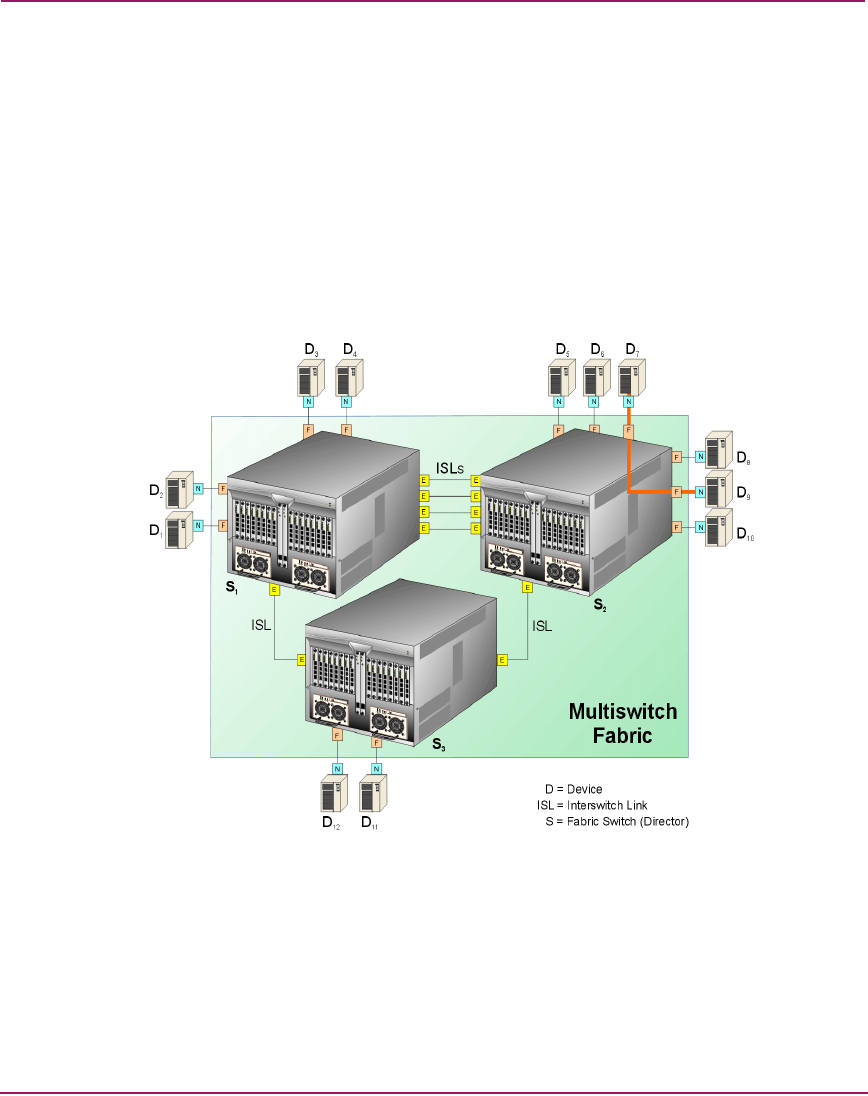FW V06.XX/HAFM SW V08.02.00 HP StorageWorks SAN High Availability Planning Guide (AA-RS2DD-TE, July 2004)
Table Of Contents
- SAN HA Planning Guide
- Contents
- About this Guide
- Introduction to HP Fibre Channel Products
- Product Management
- Planning Considerations for Fibre Channel Topologies
- Fibre Channel Topologies
- Planning for Point-to-Point Connectivity
- Characteristics of Arbitrated Loop Operation
- Planning for Private Arbitrated Loop Connectivity
- Planning for Fabric-Attached Loop Connectivity
- Planning for Multi-Switch Fabric Support
- Fabric Topologies
- Planning a Fibre Channel Fabric Topology
- Fabric Topology Design Considerations
- FICON Cascading
- Physical Planning Considerations
- Port Connectivity and Fiber-Optic Cabling
- HAFM Appliance, LAN, and Remote Access Support
- Inband Management Access (Optional)
- Security Provisions
- Optional Features
- Configuration Planning Tasks
- Task 1: Prepare a Site Plan
- Task 2: Plan Fibre Channel Cable Routing
- Task 3: Consider Interoperability with Fabric Elements and End Devices
- Task 4: Plan Console Management Support
- Task 5: Plan Ethernet Access
- Task 6: Plan Network Addresses
- Task 7: Plan SNMP Support (Optional)
- Task 8: Plan E-Mail Notification (Optional)
- Task 9: Establish Product and HAFM Appliance Security Measures
- Task 10: Plan Phone Connections
- Task 11: Diagram the Planned Configuration
- Task 12: Assign Port Names and Nicknames
- Task 13: Complete the Planning Worksheet
- Task 14: Plan AC Power
- Task 15: Plan a Multi-Switch Fabric (Optional)
- Task 16: Plan Zone Sets for Multiple Products (Optional)
- Index

Planning Considerations for Fibre Channel Topologies
80 SAN High Availability Planning Guide
Planning for Multi-Switch Fabric Support
A Fibre Channel topology that consists of one or more interconnected director or
switch elements is called a fabric. The product operational software provides the
ability to interconnect directors and switches (through E_Port connections) to
form a multi-switch fabric. Support of multi-switch fabric operation is a major
feature of a director or edge switch.
Consider installation of multiple directors or switches to form a high-availability
fabric topology that supports multiple, full-bandwidth data transmission paths
between servers and devices. Figure 35 illustrates a simple multi-switch fabric. In
the figure, the three fabric elements are Director 2/64s.
Figure 35: Example multi-switch fabric
Fabric elements cooperate to receive data from the N_Port of an attached device,
route the data through the proper director or switch fabric ports (F_Ports), and
deliver the data to the N_Port of a destination device. The data transmission path
through the fabric is typically determined by the fabric elements and is transparent
to the user. Subject to zoning restrictions, devices attached to any of the
interconnected directors or switches can communicate with each other through the
fabric.










